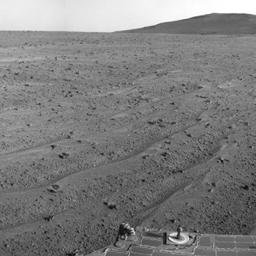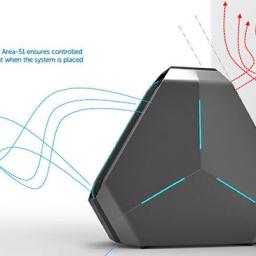 Astronomers have used a worldwide network of radio telescopes to resolve a controversy over the distance to a famous star cluster
Astronomers have used a worldwide network of radio telescopes to resolve a controversy over the distance to a famous star cluster - a controversy that posed a potential challenge to scientists' basic understanding of how stars form and evolve. The new work shows that the measurement made by a cosmic-mapping research satellite was wrong.
Until the 1990s, the consensus was that the Pleiades are about 430 light-years from Earth. However, the European satellite Hipparcos, launched in 1989 to precisely measure the positions and distances of thousands of stars, produced a distance measurement of only about 390 light-years. ... "That may not seem like a huge difference, but in order to fit the physical characteristics of the Pleiades stars, it challenged our general understanding of how stars form and evolve," said Carl Melis of the University of California, San Diego. "To fit the Hipparcos distance measurement, some astronomers even suggested that some type of new and unknown physics had to be at work in such young stars."
What's wrong with the good old "img" tag in HTML code for images? In a word, it's a tag that links to a graphic image of specific size and proportions.
[The folks at Google think the new picture tag] could usher in a new era of responsive design. The basic idea behind the concept of responsive design is that a given web site will scale and render appropriately for a specific screen size, whether that screen is attached to a desktop PC or a smartphone.
We'll find out soon enough. Google has proposed it for the new HTML 5.1 spec, and built it into a beta version of Chrome. More comments on Slashdot here.

You think it's stressful to remotely reboot a server in a datacenter in another state? Talk to NASA, where
An increasing frequency of computer resets on NASA's Mars Exploration Rover Opportunity has prompted the rover team to make plans to reformat the rover's flash memory.
The resets, including a dozen this month, interfere with the rover's planned science activities, even though recovery from each incident is completed within a day or two. Flash memory retains data even when power is off. It is the type used for storing photos and songs on smart phones or digital cameras, among many other uses. Individual cells within a flash memory sector can wear out from repeated use. Reformatting clears the memory while identifying bad cells and flagging them to be avoided.
"Worn-out cells in the flash memory are the leading suspect in causing these resets," said John Callas of NASA's Jet Propulsion Laboratory, Pasadena, California, project manager for NASA's Mars Exploration Rover Project. "The flash reformatting is a low-risk process, as critical sequences and flight software are stored elsewhere in other non-volatile memory on the rover."

Dell's just come out with an
innovatively-designed new gamer machine in their Alienware series: it's vaguely hexagon-shaped, preventing you from placing it against a wall and decreasing its ventilation. Looks cool.
You'll notice the angled corners and somewhat of a triangular shape (with twice as many sides). According to Dell, you can place the Alienware Area 51 against the wall and not have to worry about thermals getting out of the control. That's because there's a controlled gap and a sharp angle that ensures only a small part of the system actually rests against the wall, whereas there's still plenty of room for hot air to escape up and away.
This design also offers users easy access to rear ports, though if you need more room, you can rotate the chassis like a ball so that the rear is facing upward instead of an at angle. Another advantage to all those angles is it makes the occasional transportation chore easier -- there are more places to grab hold of compared to a traditional desktop.
Slashdot
linked to it and got tons of flak about it being a Slashvertisement, but I think it's cool hardware. Have a look: what do you think?
With rumors of Windows debuting Windows 9 at the end of September, pundits everywhere are asking how Microsoft could possibly dig themselves out of the hole they dug with the troubled 'feature set' of Windows 8.
According to Ed Bott of ZDNet, it can be done.We already know a little about what will be in what will probably end up being called Windows 9. Microsoft has officially announced the return of the Start menu, with a new, modern design, as well as the ability of mobile (Metro-style) apps to run in windows on the Windows desktop. More recent rumors suggest that virtual desktops will be added and Windows 8's signature charms menu will vanish. Cortana might even make an appearance.
[A] metaphor for this release might be the crack of a starter's pistol, marking the beginning of a new stage in a very long race. What gets delivered this fall as a preview will be updated in a few months as a final release, which will then be revised and expanded again and again over the next few years as Microsoft's new, faster update cadence continues.
Hey, if this version's good enough maybe I'll stop using Windows 95.
 Astronomers have used a worldwide network of radio telescopes to resolve a controversy over the distance to a famous star cluster - a controversy that posed a potential challenge to scientists' basic understanding of how stars form and evolve. The new work shows that the measurement made by a cosmic-mapping research satellite was wrong.
Astronomers have used a worldwide network of radio telescopes to resolve a controversy over the distance to a famous star cluster - a controversy that posed a potential challenge to scientists' basic understanding of how stars form and evolve. The new work shows that the measurement made by a cosmic-mapping research satellite was wrong.
